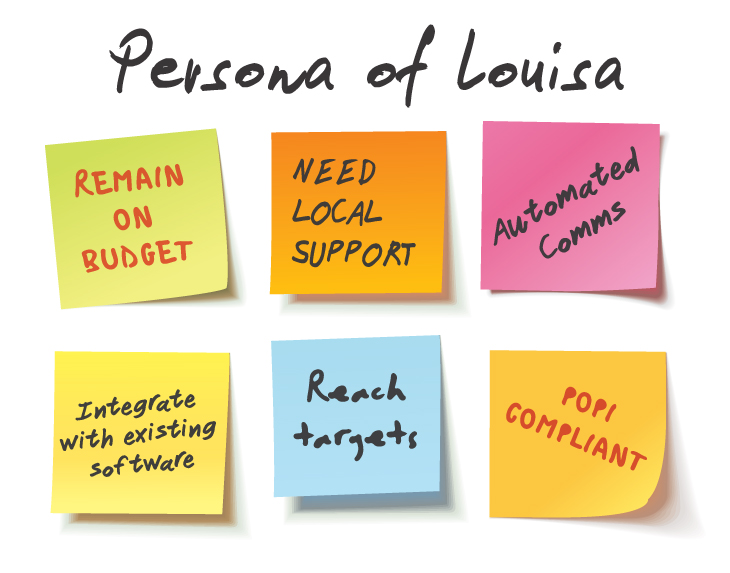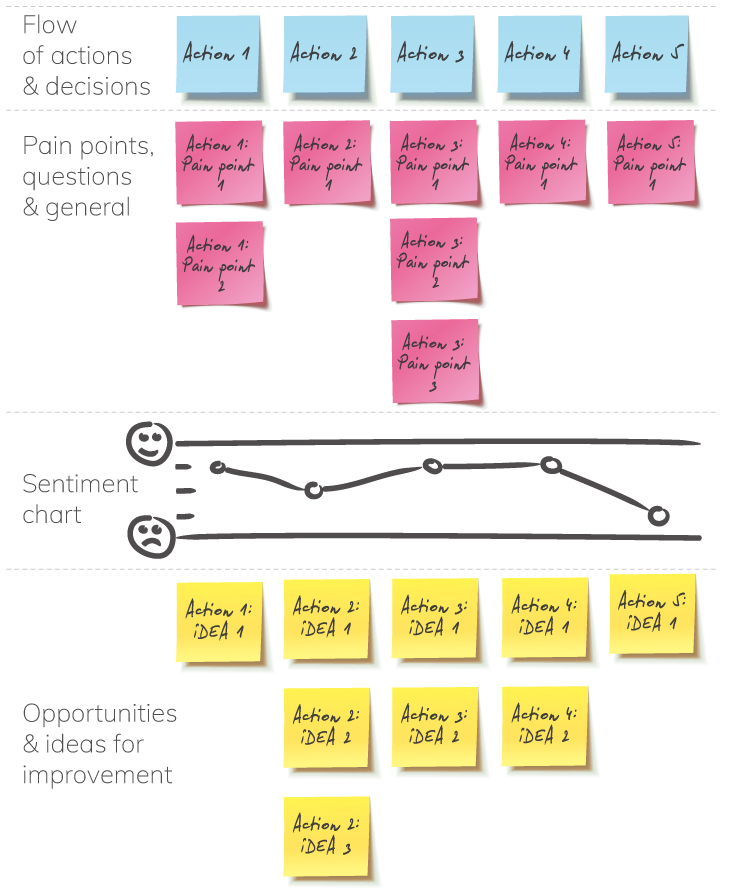Atlassian’s Team Playbook, a no-‘BS’ guide to unleashing your team’s potential, says mapping your customer journey shouldn’t take you longer than 1.5 hours – and you don’t even have to leave the office. Here’s a breakdown of how they do it:

Building an Effective Internal Comms Strategy
What you’ll need:
- 4 to 8 people
- A whiteboard
- Whiteboard markers
- Sticky notes
- A timer
- A rubber chicken (or something else you can use to bring the team back to centre)
Preparation:
For each customer journey map, focus on one of your client personas in a single scenario with a single goal – this will keep the journey map specific enough to be valuable. Make sure the people you invite to the mapping session understand the user experience in this area and the type of information that a prospect would need to know at each stage.
Step 1: Set the Customer’s Stage (5 minutes)
Introduce the client persona, their scenario, and their goal to the people in the room (or decide on these together), so they understand the scope of the session.
Step 2: Build a Possible Back-Story (10 minutes)
Get everyone to post sticky notes of why the persona is on this journey in the first place. Include anything from high-level goals to pain points, or interests in specific features / services. Group a few ideas together to design a realistic, detailed story for what lead the persona to this point.

Step 3: Map Thoughts & Feelings (30 minutes)
Now that you know who your persona is and why they’ve gotten to where they are, start plotting the journey, one sticky at a time. Include:
- Persona questions, actions, and decisions (use different colour sticky notes for these, so they’re easy to understand at a glance)
- The different communication channels (website, email, SMS, voice broadcasting, phone, social media, push notification, etc.)
- The company systems and processes that happen in the background at the different stages
Step 4: Map the Client’s Pain Points (10 minutes)
Okay, you’ve got a map. Now you need to find the pain points. Go through every step and flag which touchpoints are frustrating, incorrect, misaligned, or slow.
Discuss anything that isn’t working as it should and explore what the impact of the pain point is. For instance: is it trivial, is there some kind of work around, or will it cause the persona to exit the journey entirely?

Step 5: Chart a Client Sentiment Line (15 minutes)
Next, plot the persona’s emotional journey through the process. How do they feel at each step? Look out for things like:
- Fluctuating emotional experiences: Ups and downs are relatively normal but should be managed to avoid exhausting the persona.
- Rapid drops in sentiment: this suggests that there’s a big gap in the persona’s expectations and what’s being delivered.
- Low areas of the journey: these may be opportunities to improve the experience.
- Positive peaks: Can you improve this experience even more? Delighting customers in their journey can increase their chances of recommending you to others.
- Future feelings: Not all pain points cause drops in customer sentiment, but some may impact their feelings later in the journey.
Step 6: Analyse the Bigger Picture (15 minutes)
Step away from the map and discuss any trends or patterns you can see as a group. Are there any areas of frustration, unmet expectations / needs, or unnecessary complexity / duplication? Is every step of the process necessary?
Explore these areas to see where and how you can improve the experience.

You’ve Mapped the Client Journey. What Now?
After you’ve mapped a customer journey, record it so you can reference or adapt it in the future. To do this:
- Take photos of the map
- Document your results and recommendations
- Inform the relevant teams
- Keep it visible on a wall or in a designed, easy-to-consume digital format
- Validate your map with your clients, if possible. This will help you to pick up errors in the map before implementing any costly changes.
Mapping the Future
Try mapping a journey that you haven’t implemented yet. Finding improvement areas before the fact may improve the results of your launch.












